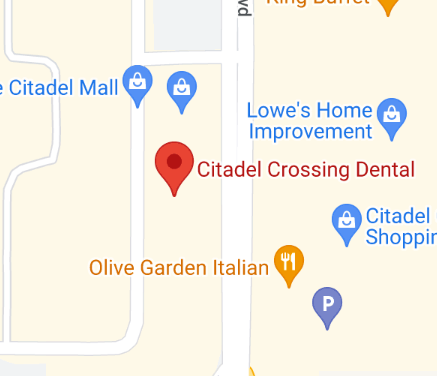(719) 574-2121
685 Citadel Dr E Suite 200B Colorado Springs, CO 80909
Retreatment of Root Canals in Colorado Springs

Root canal retreatment is a procedure done on a tooth that has previously had a root canal but has not healed correctly. Although root canal treatments are highly successful, there are times when retreatment is necessary.
Give our office a call to schedule an appointment with our endodontist today at (719) 574-2121
Details of Root Canal Retreatment
When is Retreatment Necessary?
Persistent symptoms- Even if the first root canal was successful, some patients still have pain, sensitivity, or discomfort. This means that the tooth has not healed properly, indicating the need for a root canal retreatment.
Secondary infection- Secondary infections can happen if the first root canal treatment was not successful in removing all the bacteria, if the restoration leaks, or if new decay fills the tooth with bacteria.
Complicated canal anatomy- Sometimes, patients have a complex anatomy of the tooth structure, and it’s possible that the root canal was not able to be fully treated during the first procedure. This is when a retreatment is indicated.
The Process of Root Canal Retreatment
- Removal of the existing filling- Part of the procedure would start by removing the existing filling or crown to allow full access to the root canal.
Thorough cleaning- The endodontist will clean out the tooth’s canal, getting rid of the old root canal material and any new infection.
Advanced diagnosis- Using the x-rays from the beginning of the appointment, the endodontist will examine the tooth to ensure that there are no other infections in other canals or that nothing was missed.
Addressing hidden canals- In some cases, a canal may have been hidden in the images taken. In this instance, the doctor would treat, clean, and shape the canals that were missed and seal the area with a filling or a crown.
Filling and sealing the canals- After treating all the necessary canals, the tooth is then sealed with a filling to prevent further infections.
Final restoration- A crown is then placed over the top of the tooth to finalize the restoration for functionality.
Restoration after Retreatment
Temporary filling- in some cases, a temporary filling is placed to seal the tooth to protect it from further infection.
Permanent restoration- once the doctor can confirm that the tooth is healing well, a crown is placed to get the tooth back to its original functionality.
Benefits of Retreatment
Eliminating infection and discomfort- The main goal of this procedure is to relieve pain, get rid of the infection, and promote the tooth to heal properly.
Preservation of the natural tooth- We want to make it our focus to preserve the natural tooth, which will be the best option for chewing, jaw functionality, and the look of your bright smile.
Avoiding more invasive procedures- We want to make sure we do our best to avoid more invasive procedures like extractions and implants.
Common Myths
Myth: Retreatment is a sign of a failed procedure.
Fact: The need for a root canal retreatment can be a sign of many things. It could be due to new infection, decay, the tooth being fractured, or the possibility of a complex anatomy of a tooth that could not be fully treated in the initial procedure. This would not necessarily indicate that the initial root canal failed.
Myth: Extraction is a better option than retreatment.
Fact: We usually recommend retreatment over an extraction because it’s always best to keep the natural tooth. This is more beneficial for the function of the jaw and for better oral health.
Myth: Root canal retreatment is more painful than the initial procedure.
Fact: The retreatment procedure is done under local anesthesia, so it is unlikely that you will feel any pain during the procedure. After the retreatment is finished, you may experience some discomfort, but that should subside within a few days and should not necessarily hurt more than the initial procedure.
Root canal retreatment is crucial for saving the natural tooth and healing the tooth through another procedure that didn’t heal as expected the first time.
Give our office a call to schedule an appointment with the endodontist today at (719) 574-2121.
Frequently Asked Questions
Root canal retreatment is a procedure done on a tooth that has previously had a root canal but has not healed correctly. Although root canal treatments are highly successful, there are times when retreatment is necessary. The need for a root canal retreatment can be a sign of many things. It could be due to new infection, decay, the tooth being fractured, or the possibility of a complex anatomy of a tooth that could not be fully treated in the initial procedure. This would not necessarily indicate that the initial root canal failed.
Root canal retreatment isn’t common because the initial root canal procedure is usually successful, but if the tooth doesn’t heal properly, our endodontist is skilled in performing the root canal retreatment.
There are many signs that a root canal retreatment is needed. This would include persistent pain, discomfort, swelling, or tenderness when biting. It is also common not to have any symptoms but an x-ray during an exam may be able to show a recurring infection or other problem.
The retreatment procedure is very similar to the initial root canal procedure. However, it does require a couple more steps, removing the existing filling, cleaning out the canals, and replacing the old filling with a new one or a crown. The retreatment procedure is also more intricate and requires more patience and skill in comparison to the initial root canal procedure.
The retreatment procedure is done under local anesthesia, so it is unlikely that you will feel any pain during the procedure. After the retreatment is finished, you may experience some discomfort, but that should subside within a few days and should not necessarily hurt more than the initial procedure.
The retreatment procedure has a high success rate, but since the procedure requires more skills and is more complex, than the initial treatment, the rate is a little bit lower than the initial treatment. The rate of success also depends on if the patient is following the aftercare instructions that were given after the initial procedure.
We usually recommend keeping the natural tooth as this is the best option to keep functionality, but in some cases the alternative would be to extract the tooth and replace it with an implant.
This will depend on the severity of the procedure. It takes longer than the first procedure and may require more than one visit to complete.
It is possible that you may need a new crown after the retreatment is complete. This will make sure that the tooth is safe and prevent future infection.
The endodontist will give you detailed aftercare instructions, but it is best to make sure that you have good oral habits like brushing and flossing twice a day or after every meal if possible.
BOOKING HOURS
M 8-4:30 | Tu 8-4 | Wed 8-4:30 | Th 8-4:30 | Fri 8-1
We are OPEN for ALL dental care procedures and emergency needs. Protecting the health and safety of our patients, families, and team members remains our number one priority.
Free $50 Gift Card*
$50 Gift Card when you complete an appointment with us!
*Redeemable after completed paid treatment. Must be a new patient our organization (all locations). The patient will receive a gift card via email or SMS after completion of their appointment. Cannot be combined with other offers or dental discount plans.
Free Exam & X-rays^
For New Patients without insurance we offer Free Exam and X-rays!
^For New Patients that do not have dental insurance. New patients must be 18 or older to receive free exam and x-rays. Discounts cannot be combined with other offers or dental discount plans. Additional fees may be included in individual cases.
$99 Hygiene Visit^^
For New Patients without insurance we offer Free Exam and X-rays!
^^For new patients without dental insurance. Includes Exam, X-Ray and Routine Cleaning. A Periodontal Cleaning requires additional fees, and rescheduled for further treatment. Cannot be combined with other offers or dental discount plans.

